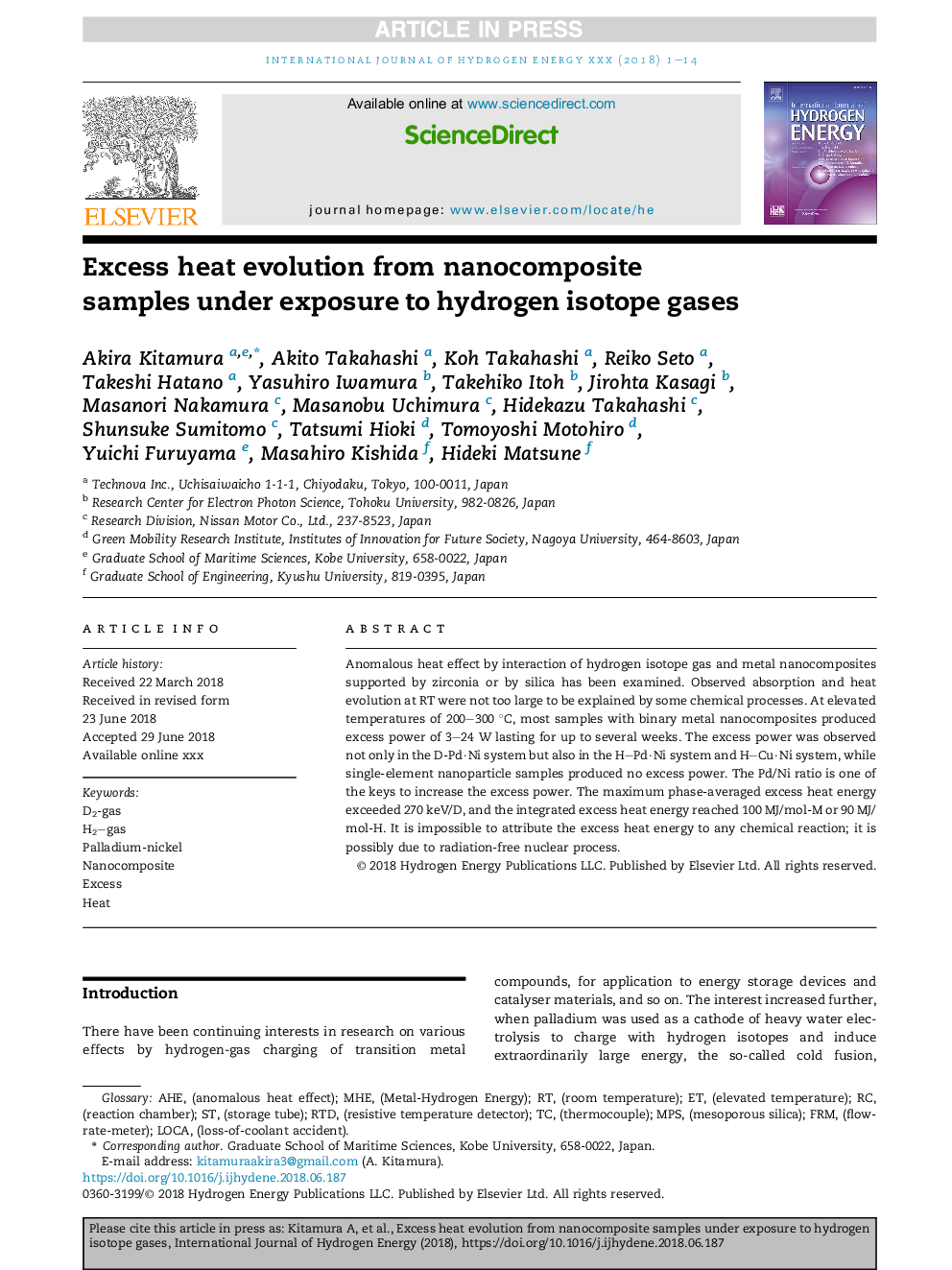| Article ID | Journal | Published Year | Pages | File Type |
|---|---|---|---|---|
| 8961304 | International Journal of Hydrogen Energy | 2018 | 14 Pages |
Abstract
Anomalous heat effect by interaction of hydrogen isotope gas and metal nanocomposites supported by zirconia or by silica has been examined. Observed absorption and heat evolution at RT were not too large to be explained by some chemical processes. At elevated temperatures of 200-300 °C, most samples with binary metal nanocomposites produced excess power of 3-24 W lasting for up to several weeks. The excess power was observed not only in the D-Pd·Ni system but also in the HPd·Ni system and HCu·Ni system, while single-element nanoparticle samples produced no excess power. The Pd/Ni ratio is one of the keys to increase the excess power. The maximum phase-averaged excess heat energy exceeded 270 keV/D, and the integrated excess heat energy reached 100 MJ/mol-M or 90 MJ/mol-H. It is impossible to attribute the excess heat energy to any chemical reaction; it is possibly due to radiation-free nuclear process.
Related Topics
Physical Sciences and Engineering
Chemistry
Electrochemistry
Authors
Akira Kitamura, Akito Takahashi, Koh Takahashi, Reiko Seto, Takeshi Hatano, Yasuhiro Iwamura, Takehiko Itoh, Jirohta Kasagi, Masanori Nakamura, Masanobu Uchimura, Hidekazu Takahashi, Shunsuke Sumitomo, Tatsumi Hioki, Tomoyoshi Motohiro, Yuichi Furuyama,
